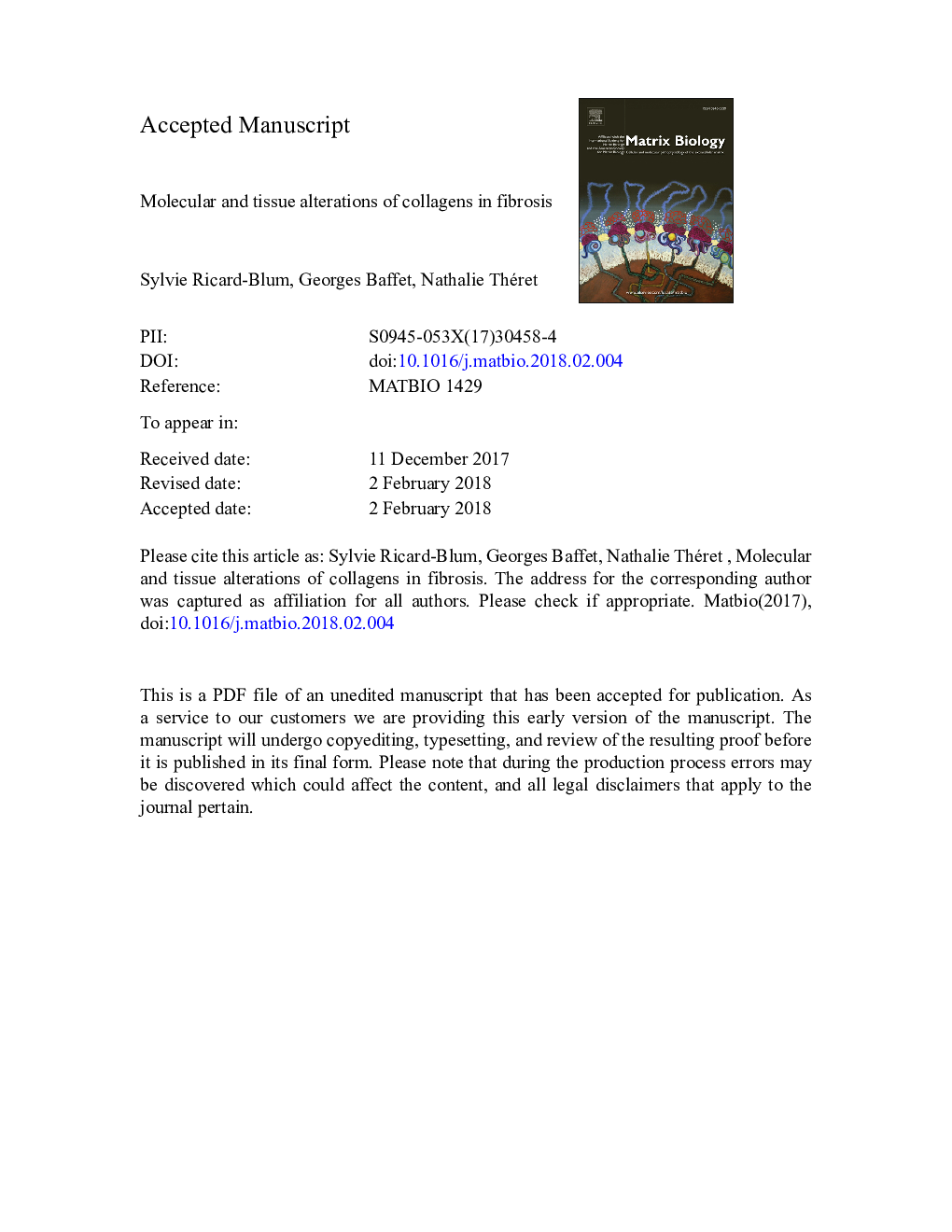| Article ID | Journal | Published Year | Pages | File Type |
|---|---|---|---|---|
| 8454988 | Matrix Biology | 2018 | 65 Pages |
Abstract
The collagen network is altered in fibrotic diseases associated with extracellular matrix (ECM) biosynthesis and remodeling. This mini-review focuses on the quantitative and qualitative modifications of collagens occurring at the molecular and tissue levels in fibrosis. They result from changes in collagen expression, biosynthesis, enzymatic cross-linking and degradation by several protease families. These molecular modifications, which are mostly regulated by TGF-β, are associated with altered collagen organization at the tissue level, leading to a fibrotic signature that can be analyzed by Second Harmonic Generation (SHG) microscopy.
Keywords
ADAMTSERKHDACSTRAPLTBPECMDnmtPDGFsHGTGFAP1TPEFlatent TGF-β binding proteinTissue inhibitor of metalloproteasePIK3Transcription factor AP-1TNFDNA methyl-transferaseHSCMMPNFκBRAC-alpha serine/threonine-protein kinaseSp1ADAMAktsmooth muscle actinLOXinterferonIFNinterleukintransforming growth factora disintegrin and metalloproteinasea disintegrin and metalloproteinase with thrombospondin motifsSecond harmonic generationSMATIMPHepatic stellate cellsplatelet-derived growth factorTranscription factor Sp1tumor necrosis factorFibrosisLysyl oxidaseExtracellular matrixmatrix metalloproteinaseBMPTwo-photon excitation microscopysecond harmonic generation microscopyBiomarkersHBVHCVHepatitis C virusHIVhuman immunodeficiency virushepatitis B virusBone morphogenetic proteinExtracellular signal-regulated protein kinaseCross-linkingcollagens
Related Topics
Life Sciences
Biochemistry, Genetics and Molecular Biology
Cancer Research
Authors
Sylvie Ricard-Blum, Georges Baffet, Nathalie Théret,
